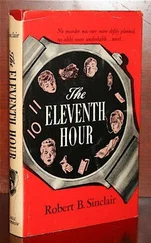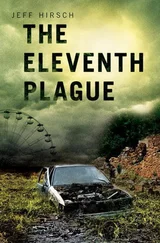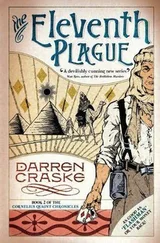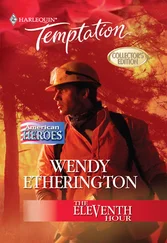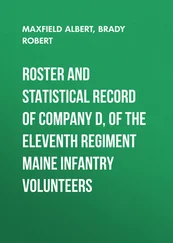Anthony Summers - The Eleventh Day
Здесь есть возможность читать онлайн «Anthony Summers - The Eleventh Day» весь текст электронной книги совершенно бесплатно (целиком полную версию без сокращений). В некоторых случаях можно слушать аудио, скачать через торрент в формате fb2 и присутствует краткое содержание. Жанр: Старинная литература, на английском языке. Описание произведения, (предисловие) а так же отзывы посетителей доступны на портале библиотеки ЛибКат.
- Название:The Eleventh Day
- Автор:
- Жанр:
- Год:неизвестен
- ISBN:нет данных
- Рейтинг книги:3 / 5. Голосов: 1
-
Избранное:Добавить в избранное
- Отзывы:
-
Ваша оценка:
- 60
- 1
- 2
- 3
- 4
- 5
The Eleventh Day: краткое содержание, описание и аннотация
Предлагаем к чтению аннотацию, описание, краткое содержание или предисловие (зависит от того, что написал сам автор книги «The Eleventh Day»). Если вы не нашли необходимую информацию о книге — напишите в комментариях, мы постараемся отыскать её.
The Eleventh Day — читать онлайн бесплатно полную книгу (весь текст) целиком
Ниже представлен текст книги, разбитый по страницам. Система сохранения места последней прочитанной страницы, позволяет с удобством читать онлайн бесплатно книгу «The Eleventh Day», без необходимости каждый раз заново искать на чём Вы остановились. Поставьте закладку, и сможете в любой момент перейти на страницу, на которой закончили чтение.
Интервал:
Закладка:
Three hundred miles away in the little town of Cranbury, New Jersey, Todd Beamer’s wife, Lisa, saw the first pictures of the crash site on television and knew her husband was dead.
In Windham, New York, someone told Jeremy Glick’s wife, Lyz, that there might be survivors. Then her father returned from the garden, where—at the request of the FBI—he had kept open the line on which Jeremy had called. He had waited, waited, for an hour and a half. Now, as he came back in, Lyz saw that her father was weeping.
Hundreds of miles apart, the two wives, now widows, sank to their knees in grief. Sudden, unforeseeable grief was invading homes across the country, across the world.
EIGHT
AT THE TRADE CENTER IN NEW YORK, UNSEEN BY THE CAMERAS, A lone fire chief was grappling with the possibility for which no one had planned. John Peruggia, of Medical Services, was at the mayor’s Office of Emergency Management—in normal times, the city’s crisis headquarters.
By an irony of history, though, the office was located in the Trade Center’s Building 7. That was too close to the North Tower, and Building 7 had been evacuated within an hour of the initial strike. Peruggia was one of a handful of officials who remained. He was still there, standing in front of the building and giving instructions to a group of firefighters, when an engineer—he thought from the Building Department—made a stunning prediction.
Structural damage to the towers, the official told him, was “quite significant … the building’s stability was compromised … the North Tower was in danger of a near imminent collapse.”
This was a warning Peruggia knew he had to pass urgently to the very top, to chief of department Ganci, now at his command post opposite the North Tower. With the usual command and control system out of action, the only way to get word to him was the old-fashioned way—by runner. Peruggia’s aide that day, EMT Richard Zarrillo, set off on a hazardous five-hundred-yard journey.
AROUND THAT TIME, Brian Clark and Stanley Praimnath, on the final lap of their escape from the South Tower, reached the concourse at plaza level. “We stared, awestruck,” Clark remembered. “What we looked at was, normally, a flowing fountain, vendors with their wagons … tourists … a beautiful ‘people place.’ Yet this area, several acres, was dead … a moonscape … it looked like it had been deserted for a hundred years.”
No one was running or obviously panicking. Clark and his companion were told to proceed “down to the Victoria’s Secret shop, turn right, and exit by the Sam Goody store.” Then a policeman urged them to get moving and not look up. They ran a block or so, and turned to look back. “You know,” Praimnath said, “I think those buildings could go down.”
“No way,” Clark replied. “Those are steel structures.”
HIGH IN THE TOWER the two men had just escaped, an Aon Insurance vice president named Kevin Cosgrove was on the phone to a 911 operator.
C
OSGROVE
: Lady, there’s two of us in this office … 105. Two Tower. We’re not ready to die, but it’s getting bad … Smoke really bad …
F
IRE
D
EPARTMENT OPERATOR
(joining the call): We’re getting there. We’re getting there.
C
OSGROVE:
Doesn’t feel like it, man. I got young kids … I can barely breathe now. I can’t see … We’re young men. We’re not ready to die.
911 OPERATOR:
Okay, just try to hang in there.
On the same floor, Cosgrove’s colleague Sean Rooney was still on the line to his wife, Beverly. Neither of them now hoped for rescue. “I think,” Beverly said, “that we need to say goodbye.”
• • •
FAR BELOW, on the ground near the towers, EMT Zarrillo completed his dangerous run to get to Chief Ganci and began blurting out the warning from Chief Peruggia. “Listen … the message I was given was that the buildings are going to collapse. We need to get our people out.”
“Who the fuck,” Ganci had time to say, “told you that?”
At that moment, Zarrillo would recall, there was “this thunderous, rolling roar.”
FIREFIGHTER RICHARD CARLETTI, peering up at the South Tower, had noted a sudden change. It “started to lean. The top thirty floors leaned over … I saw the western wall start to belly out.” The columnist Pete Hamill saw the walls “bulge out,” and heard “snapping sounds, pops, little explosions.” The explosive noises—to some they seemed “real loud”—were followed by a sort of “groaning and grinding.”
High in the tower itself, Aon’s Kevin Cosgrove finally lost patience with the 911 operator. “Name’s Cosgrove,” he said. “I must have told you a dozen times already. C.O.S.G.R.O.V.E. My wife thinks I’m all right. I called and said I was leaving the building and that I was fine … There are three of us in here … Three of us … Two broken windows. Oh, God … OH …!” Against a background of huge noise, Cosgrove screamed. Then the line went dead.
Beverly Rooney, still on the phone to her husband, heard sounds she, too, recalled as sounding like an explosion, followed by a crack, followed by a roaring sound. “The floor fell out from under him,” she thought. “It sounded like Niagara Falls. I knew without seeing that he was gone.”
Rooney and Cosgrove and so many others were gone. Then, and in little more than the time it takes to read these words, the South Tower itself was gone.
“The entire structure just sank down on to itself with a colossal whoosh,” reported the British journalist David Usborne, who had watched from the park in front of City Hall. “For a second, the smoke and dust cleared enough to reveal a stump of the core of the building … But the clouds closed in again and nothing more could be seen. All of us simply stood and gaped, hands to our faces.”
• • •
IN THE STUDIO AT ABC, Peter Jennings had been juggling the cascade of brutal news, his eye on one live monitor, then another. “It may be,” he said, puzzled by the vast new plume of smoke that had appeared where the South Tower had been, “that something fell off the building.” Jennings asked a colleague closer to the scene what had happened.
“The second building that was hit by the plane,” Don Dahler told him, “has just completely collapsed. The entire building has just collapsed … It folded down on itself, and it’s not there anymore.” The famously unflappable Jennings allowed himself an on-air “My God! My God!” Then, as if in the hope that he had misheard, “The whole side has collapsed?”
Dahler said it again. “The whole building has collapsed … There is panic on the streets. Thousands of people running … trying to get away.”
It was 9:59 A.M. One of the tallest buildings in the world had collapsed in no more than twenty seconds. “From a structure,” in the words of a witness, “to a wafer.”
IN THE WAKE of the roar there was darkness—an all-enveloping, suffocating, blinding dust cloud—and cloaked in the cloud a mass of humanity, rushing pell-mell for refuge.
Fire chief Ganci and his senior aides, and Zarrillo, the EMT who had brought word of a possible collapse, rushed into the garages of adjacent buildings. “I took ten or fifteen rolling steps into the garage,” Zarrillo recalled, “and hugged into a corner, an indentation, and I felt two or three guys get in behind me … The dust, the cloud, came rolling in.”
Chief Peruggia, still outside Building 7, became aware of the cloud as he answered a woman reporter’s question. “I grabbed the female, threw her through the revolving doors of Number 7 … Everything came crashing through the front … Next thing I remember I was covered in glass and some debris … I had shards of glass impaled in my head … I was able to get all this debris and rubble off me and cover my face with my coat so that I could breathe. It was very thick dust. You couldn’t see.”
Читать дальшеИнтервал:
Закладка:
Похожие книги на «The Eleventh Day»
Представляем Вашему вниманию похожие книги на «The Eleventh Day» списком для выбора. Мы отобрали схожую по названию и смыслу литературу в надежде предоставить читателям больше вариантов отыскать новые, интересные, ещё непрочитанные произведения.
Обсуждение, отзывы о книге «The Eleventh Day» и просто собственные мнения читателей. Оставьте ваши комментарии, напишите, что Вы думаете о произведении, его смысле или главных героях. Укажите что конкретно понравилось, а что нет, и почему Вы так считаете.



